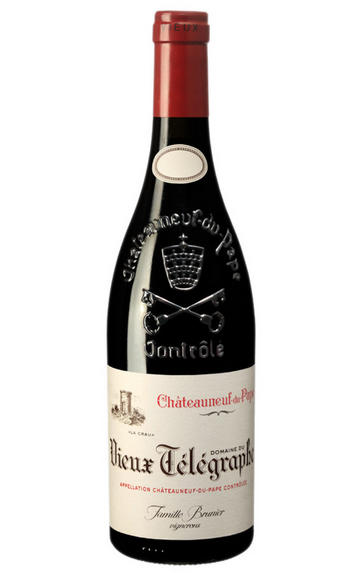
2011 Châteauneuf-du-Pape Rouge, La Crau, Domaine du Vieux Télégraphe, Rhône
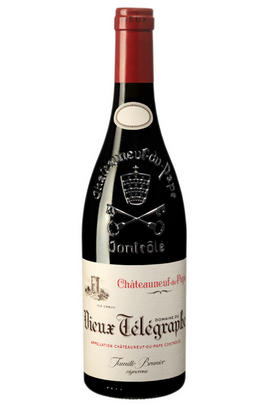
Critics reviews
The Brunier family continues to turn out a beautiful array of wines, ranging from its value-priced Le Pigoulet and new entry called Megaphone, to their top-of-the-line, world-class Vieux Telegraphe Chateauneuf du Pape. The estate’s second wine, Telegramme, possesses one of the most innovative and charming labels in the wine world. This estate is somewhat unusual in that it has 135 acres of contiguous parcels in the famous La Crau sector of Chateauneuf du Pape. It has one of the most precocious terroirs in the appellation, and is often among the first estate’s to harvest because of La Crau’s microclimate.
Robert Parker, Wine Advocate #204, Dec 2012
Jancis Robinson MW, jancisrobinson.com – 28 Feb 2013
The Brunier family continues to turn out a beautiful array of wines, ranging from its value-priced Le Pigoulet and new entry called Megaphone, to their top-of-the-line, world-class Vieux Telegraphe Chateauneuf du Pape. The estate’s second wine, Telegramme, possesses one of the most innovative and charming labels in the wine world. This estate is somewhat unusual in that it has 135 acres of contiguous parcels in the famous La Crau sector of Chateauneuf du Pape. It has one of the most precocious terroirs in the appellation, and is often among the first estate’s to harvest because of La Crau’s microclimate.
Robert Parker, Wine Advocate #204, Dec 2012
About this WINE
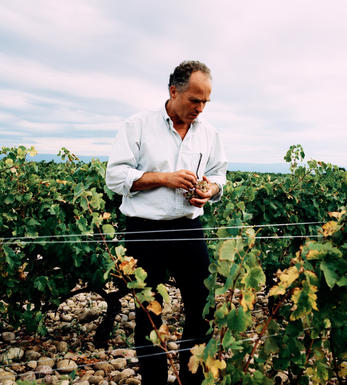
Vieux Telegraphe
Vieux Télégraphe is one of the most renowned estates in the Southern Rhône. Blessed with the finest locations in the area on the famed La Crau plateau, there is an emphasis on terroir expression and natural winemaking. The Bruniers, who own the property, started their love affair with La Crau in 1898 and on which they now own 70ha. This plateau – a Grand Cru equivalent in Châteauneuf-du-Pape – is so reputed for several reasons. Firstly, its galets roules (pudding stones) that re-emit the heat of the sun, producing a warm microclimate ideal for even berry ripening. Beneath these lies a subsoil of clay, which counters excess heat by keeping the vines hydrated and cool. Finally, at 120m altitude, it sits higher than surrounding areas. This brings exposure to wind (notably the Mistral), which again keeps the vines cool and free from diseases (and occasionally frost).
In 2021, the domaine was lucky to have been spared the worst of the flash frost that hit the region in April. Pallières was slightly impacted, but Piedlong and La Crau both emerged unscathed. The family did, nonetheless, see a moderate drop in yield due to the rains, with Vieux Télégraphe down by about 30%. Winemaker Daniel Brunier describes the vintage as classic, breaking the long series of “solaire” vintages we’ve seen since 2015. The wines show freshness but the slow and complete ripening brought about by a later-than-usual harvest brought with it concentration of flavours and balance. Daniel believes the wines will produce some wonderful surprises throughout the course of their ageing.
Alongside their Châteauneuf properties, the Brunier family owns Domaine des Pallières in Gigondas – a mixed farming estate set within the Provençal Forest. There they were not impacted by the rains (or indeed frost) in the same way. Daniel is extremely proud of the vintage. He describes the wines as pure, linear, with more moderate levels of alcohol and showing great sophistication and balance. He believes his Racines to be one of the best he has ever made.
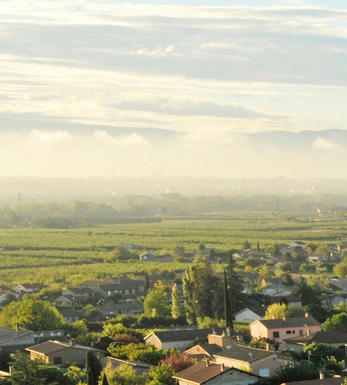
Châteauneuf-du-Pape
The most celebrated village of the Southern Rhône, Châteauneuf-du-Pape is the birthplace of the now indispensable French Appellation d’Origine Contrôlée system – imperfect though it may be. Compared to the Northern Rhône, the vineyards here are relatively flat and often feature the iconic galet pebbles – the precise benefits of which are a source of much debate. Minimum alcohol levels required by the AOC are the highest in France, but at 12.5% it is well below the natural generosity of Grenache, which only achieves its full aromatic potential when it is fully ripe and laden with the resultant high sugars. Syrah and Mourvèdre contribute the other defining elements in the blend, adding pepper, savoury spice and structure to the decadent Grenache. There are a further 10 permitted red grape varieties which can be used to adjust the “seasoning”. Of the five white varieties permitted, it is Grenache Noir’s sibling – predictably perhaps – Grenache Blanc, which dominates, though Roussanne shows a great deal of promise when handled well, notably at Château de Beaucastel.
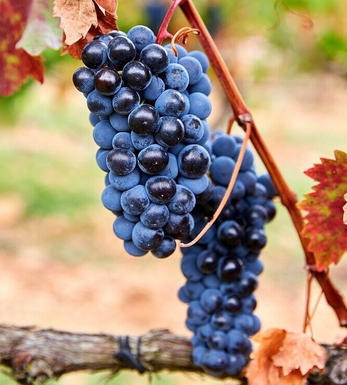
Southern Rhône Blend
The vast majority of wines from the Southern Rhône are blends. There are 5 main black varieties, although others are used and the most famous wine of the region, Châteauneuf du Pape, can be made from as many as 13 different varieties. Grenache is the most important grape in the southern Rhône - it contributes alcohol, warmth and gentle juicy fruit and is an ideal base wine in the blend. Plantings of Syrah in the southern Rhône have risen dramatically in the last decade and it is an increasingly important component in blends. It rarely attains the heights that it does in the North but adds colour, backbone, tannins and soft ripe fruit to the blend.
The much-maligned Carignan has been on the retreat recently but is still included in many blends - the best old vines can add colour, body and spicy fruits. Cinsault is also backtracking but, if yields are restricted, can produce moderately well-coloured wines adding pleasant-light fruit to red and rosé blends. Finally, Mourvèdre, a grape from Bandol on the Mediterranean coast, has recently become an increasingly significant component of Southern Rhône blends - it often struggles to ripen fully but can add acidity, ripe spicy berry fruits and hints of tobacco to blends.


Buying options
Add to wishlist
Description
Vieux Télégraphe is a large estate, with about 45 hectares of red grapevines planted, averaging 55 years in age. Blessed with one of the finest locations in the area, the particularly hot microclimate is such that the Bruniers, owners of the estate for almost a century, are able to harvest as much as a week ahead of their neighbours.
Daniel Brunier is forthright in describing the 2011 vintage, “We took some risks waiting for the end of the harvest,” which was for this reason extended for nearly a month. The risks have clearly paid off. The 45-day maceration and extended maturation cannot hide the exuberant come-hither of the fruit. Beyond all this, as always, there is real depth with spicy, red-berry fruit now in the ascendant and the darker more saturnine notes, courtesy of the Mourvèdre, left to wait.
wine at a glance
Delivery and quality guarantee